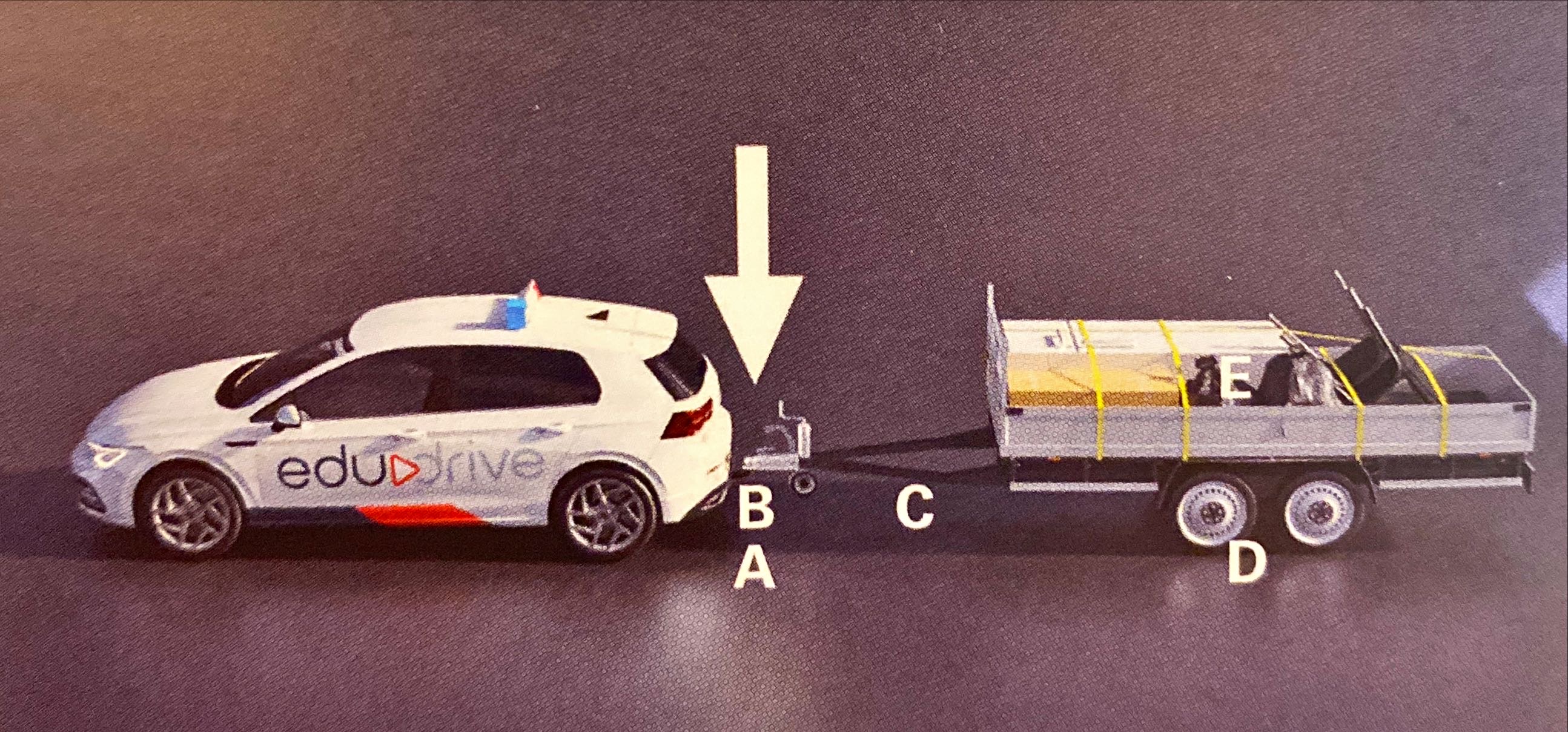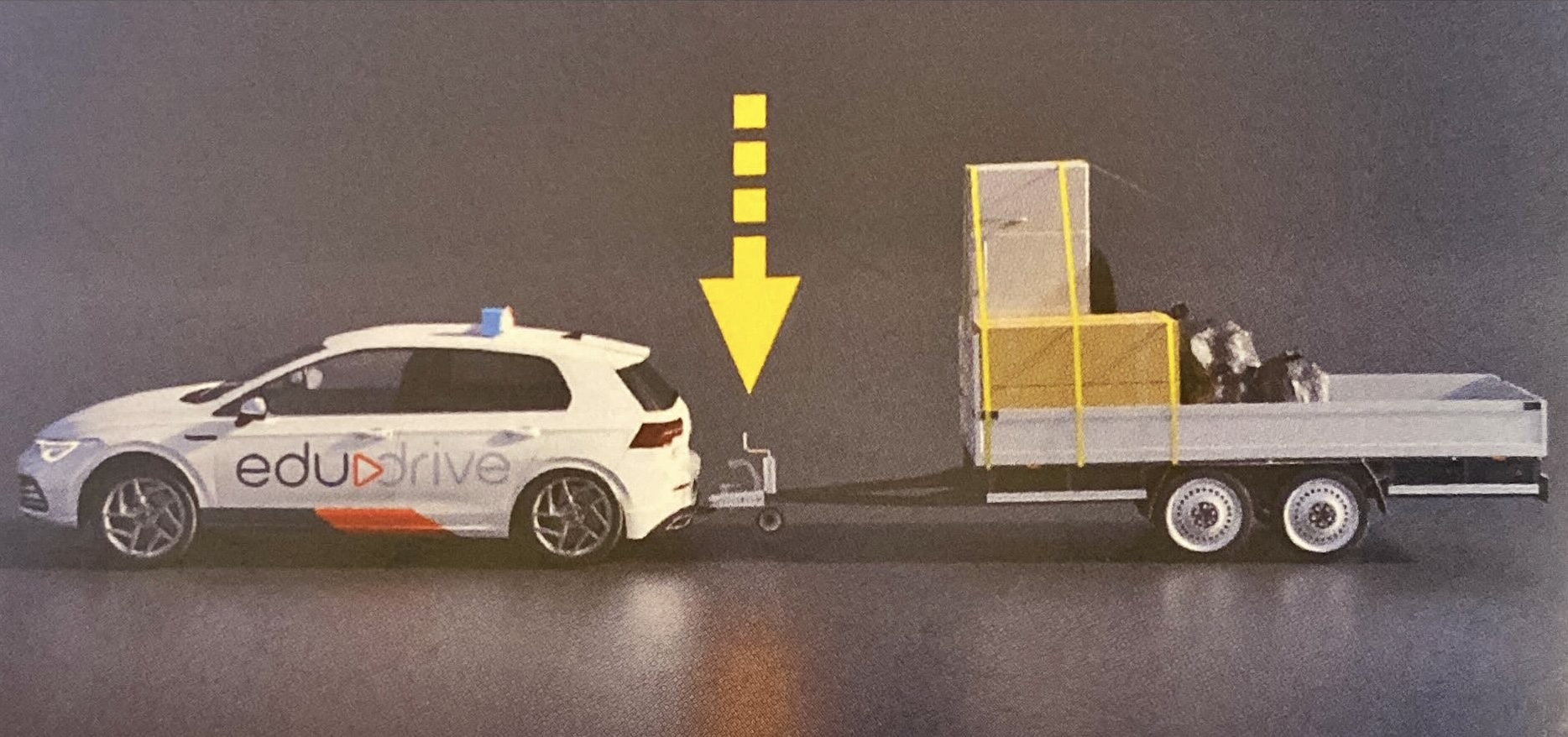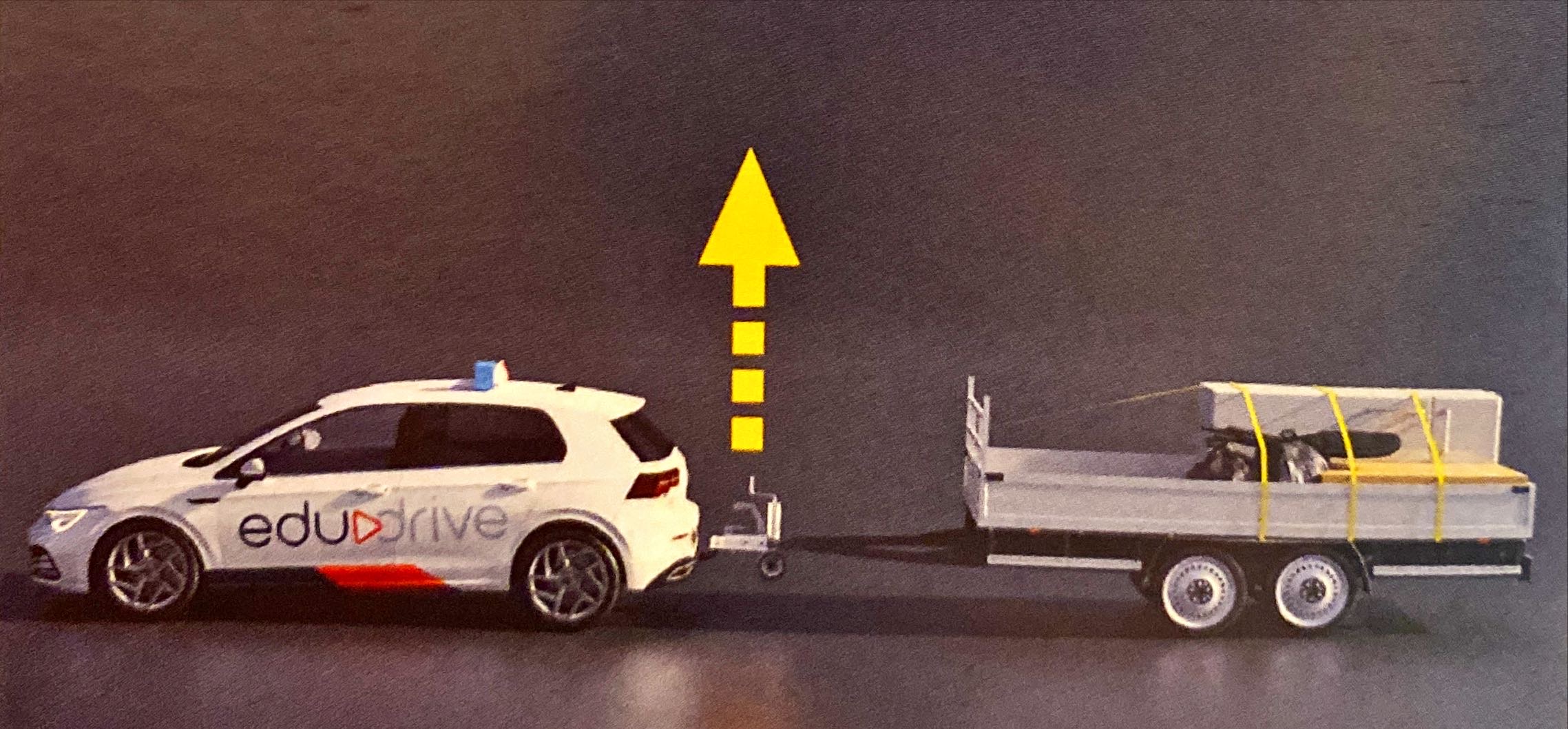Legal requirements for cargo
- The driver must not be hindered by the load
- The driver must have 100% vision forward, to the sides and in the mirrors
- The load must be secured. Loose cargo such as sand or gravel must be properly covered, for example with a net or tarp.
- The car with its load may not weigh more than the permitted maximum axle load, the maximum load under the coupling and the permitted maximum mass (the car’s registration certificate states which maximums apply)
- Even with a load, lighting, retroreflectors, direction indicators and license plates must be clearly visible
- Cargo may not have sharp parts that could pose a danger to others in the event of a collision (this rule does not apply to cargo more than 2 meters above the road surface) 🤔
Center axis: Many trailers have a center axle. The axle is the pivot that allows the wheels attached to it to turn. The heaviest part of a load is best placed in the center of the trailer above the axle.
Length, width and height of cargo
What is allowed, what is not?
Passenger car
- Load may not protrude in front (unless the load is indivisible lengthwise)
- Loads that are indivisible lengthwise (ladders, beams, etc.) may protrude a maximum of 1 meter in front of the car.
- Load may protrude a maximum of 1 meter behind the car.
- Load may not protrude to the side (unless the load is indivisible in width).
- Loads that are indivisible in width may protrude 20 cm on each side up to a maximum width of 2.55 meters.
- Load may be a maximum of 4 meters high (this includes a car).
Trailer
- Load must not protrude.
- Loads that are indivisible lengthwise may not protrude in front of the trailer.
- Loads may not extend more than half the length of the trailer at the rear, up to a maximum of 5 meters from the center of the rear axle.
- Load may not protrude to the side (unless the load is indivisible in width).
- Loads that are indivisible in width may extend to a maximum total width of 3 meters.
- Load may be a maximum of 4 meters high (this includes a trailer).
- Cargo that protrudes more than 1 meter behind it must carry a marking sign. Cargo that protrudes more than 10 cm from the sides must carry a marking sign at the front, back, left and right.
- If mandatory lighting is used, loads that protrude in length at the rear must carry a red light. Loads that protrude in width must have white lights on both sides at the front and red lights on both sides at the rear.
Load carrier
A load carrier can transport specific goods on the back (such as bicycles) or on top of the car (such as ski or luggage boxes).
Load carrier safety requirements
| Load carrier on the back (bicycle carrier) | Load carrier on top (roof carrier) |
|---|---|
| The load carrier must be properly secured | The load carrier must be properly secured |
| The load carrier may only be used for the (quantity of) goods for which it is intended | The load carrier may only be used for the (quantity of) goods for which it is intended |
| If the load carrier or load shields the lighting, direction indicators or license plate, the load carrier itself must contain these facilities | Does not apply |
| If the bicycle carrier is attached to the towbar, the nose weight may not exceed the maximum pressure determined by the car manufacturer. If this information is not known, a maximum pressure of 75 kg applies | The load carrier may not be loaded heavier than the maximum roof load determined by the car manufacturer |
Ball pressure
When driving safely with a trailer or caravan, the concept of ‘ball weight’ plays an important role. Ball pressure is the force with which the trailer presses on the tow bar of your car via the coupling.
The maximum load that the coupling may carry is stated on your car’s registration certificate. This load limit takes precedence. For example: a car has a maximum load of 80 kg. The maximum load on the trailer coupling is 90 kg. In this case, 80 kg applies as the maximum load.
Balancing the weight
A. Towbar B. Link (coupling) C. Drawbar D. Trailer axle E. Load
‼️ Keep the weight of the load in the trailer as low as possible, distribute the load well and place heavy loads especially above the axle in the middle of the trailer or caravan.

⚠️ A lot of cargo in the front of the trailer or caravan results in a higher nose weight.

⚠️ More cargo in the rear ensures low nose weight.

A good nose weight provides extra stability when driving with a trailer or caravan.
- Nose Weight/Kogeldruk: This term refers to the downward force exerted by the trailer or caravan on the tow hitch of the towing vehicle. This weight is critical because it affects how the trailer or caravan and the towing vehicle handle on the road.
- Importance of Proper Nose Weight:
- If the nose weight is too high (too much weight at the front of the trailer), it can put excessive strain on the towing vehicle’s rear suspension, affecting its handling and braking. It can also make the front of the towing vehicle lighter, leading to poor steering control.
- Conversely, if the nose weight is too low (too much weight at the rear of the trailer), it can lead to instability. The trailer or caravan may sway or fishtail, especially at higher speeds or in windy conditions, making it difficult to control and increasing the risk of accidents.
- Achieving Good Nose Weight:
- The key is to distribute the load within the trailer or caravan evenly, with a slight bias towards the front, but not so much that it exceeds the recommended nose weight.
- Heavy items should be placed above the axle(s) and as centrally as possible to maintain balance. This placement helps in achieving the right balance between too much and too little nose weight.
- Always adhere to the manufacturer’s specifications for maximum nose weight and ensure it aligns with the towing vehicle’s capacity.
Tire pressure and load
Do you drive a more heavily loaded car (and/or trailer)?
Then consider these three tips:
- Do not overload your car/trailer
- Increase your tire pressure
- Watch your speed